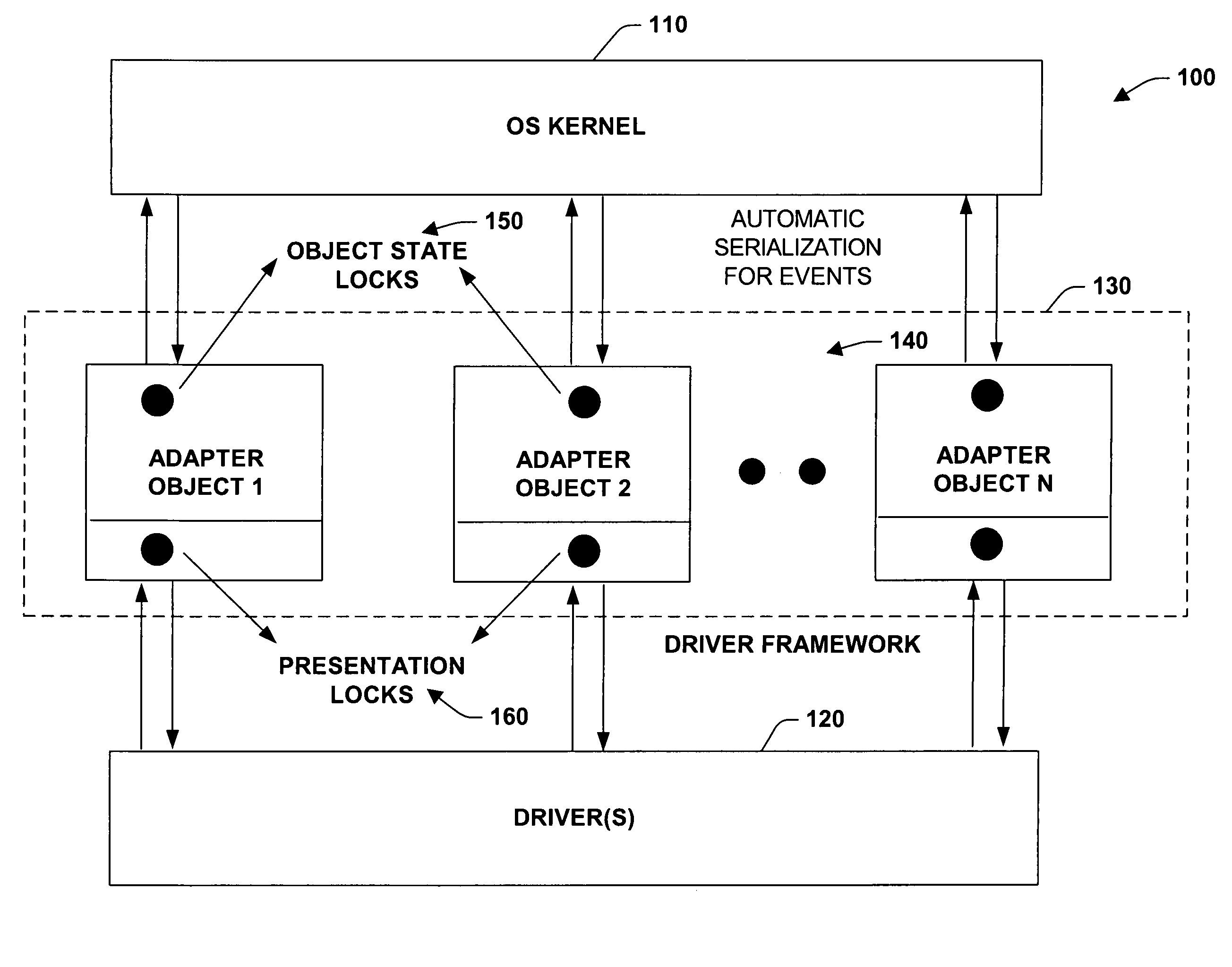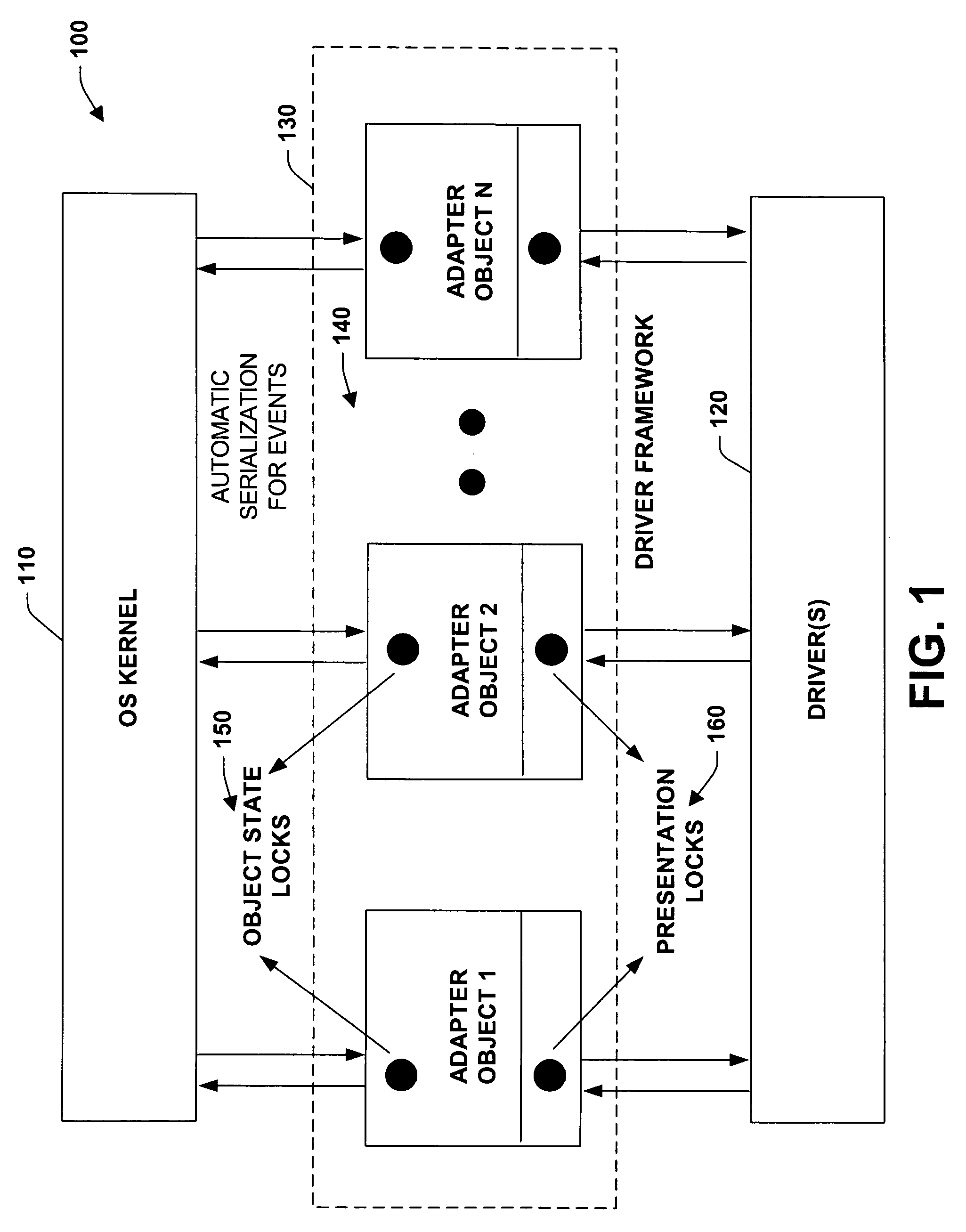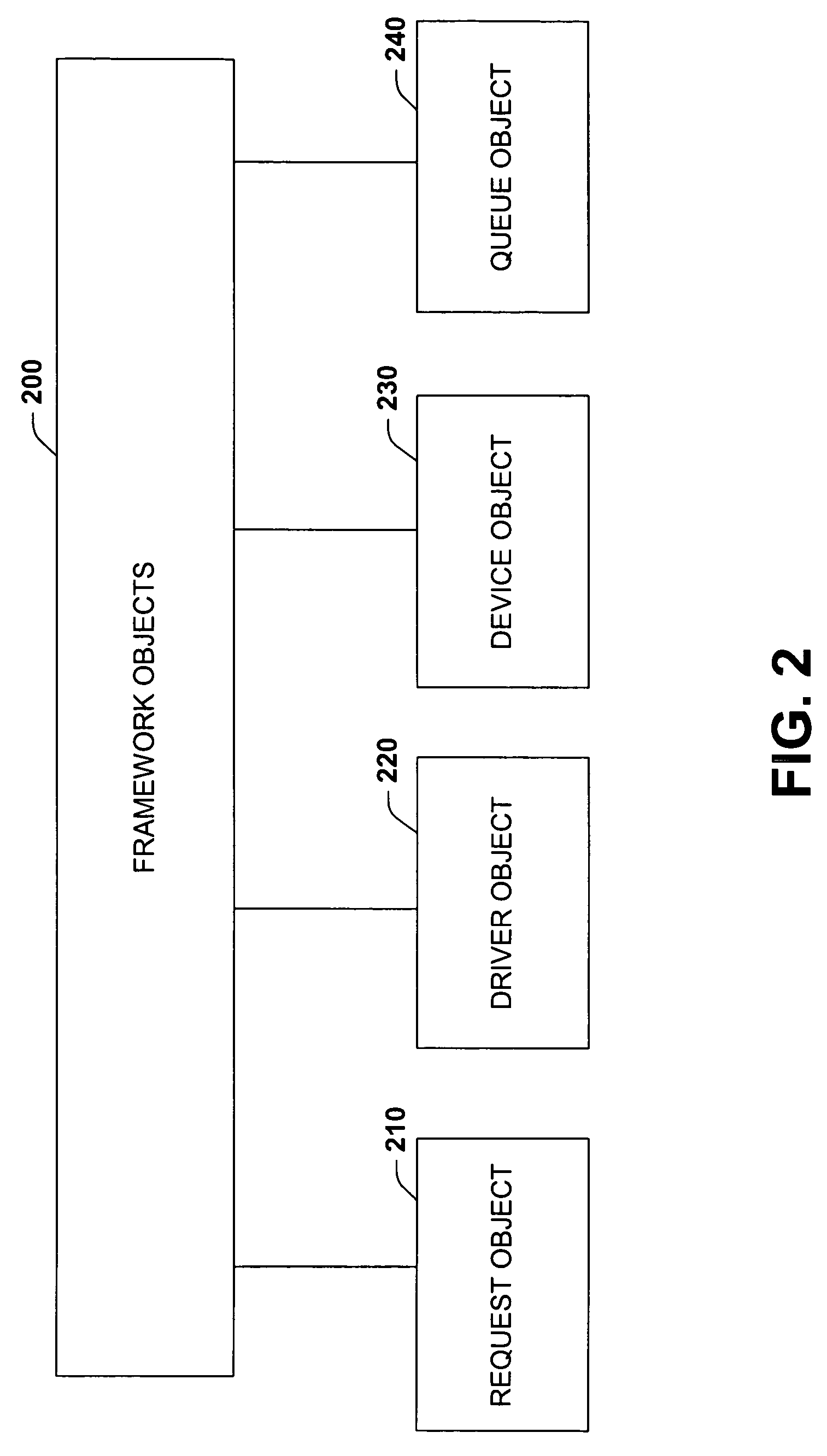Driver framework component for synchronizing interactions between a multi-threaded environment and a driver operating in a less-threaded software environment
a software environment and driver technology, applied in the field of computer systems, can solve the problems of time-consuming and difficult code writing, data corruption in the program, and errors in which locks are not utilized when they should be, and achieve the effect of facilitating object lifetime and event exposur
- Summary
- Abstract
- Description
- Claims
- Application Information
AI Technical Summary
Benefits of technology
Problems solved by technology
Method used
Image
Examples
Embodiment Construction
[0025]The present invention relates to a system and methodology to facilitate automatic interactions between a highly threaded software environment such as an operating system kernel and a module operating in a less threaded environment. This is achieved by supplying adapter objects that employ various automated locking components to synchronize interactions between the environments such as processing of events or interrupts that may be generated in the system. In one aspect, a driver management system is provided that includes a driver framework component (DFC) that is separate from a driver or other type module, wherein the DFC generates objects that facilitate seamless interactions between the driver and a highly threaded system. A presentation component associated with the DFC selectively exposes objects to the driver in a multi-threaded environment. The framework component also serializes event processing to automatically mitigate race conditions associated with the event and t...
PUM
 Login to View More
Login to View More Abstract
Description
Claims
Application Information
 Login to View More
Login to View More - R&D
- Intellectual Property
- Life Sciences
- Materials
- Tech Scout
- Unparalleled Data Quality
- Higher Quality Content
- 60% Fewer Hallucinations
Browse by: Latest US Patents, China's latest patents, Technical Efficacy Thesaurus, Application Domain, Technology Topic, Popular Technical Reports.
© 2025 PatSnap. All rights reserved.Legal|Privacy policy|Modern Slavery Act Transparency Statement|Sitemap|About US| Contact US: help@patsnap.com



